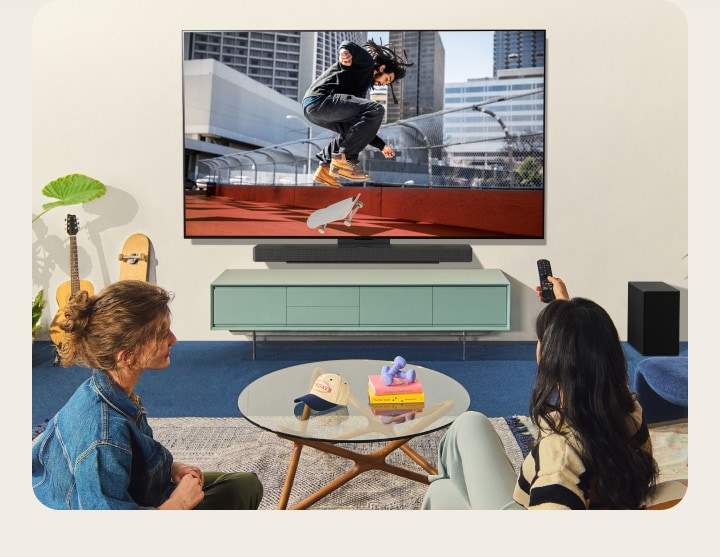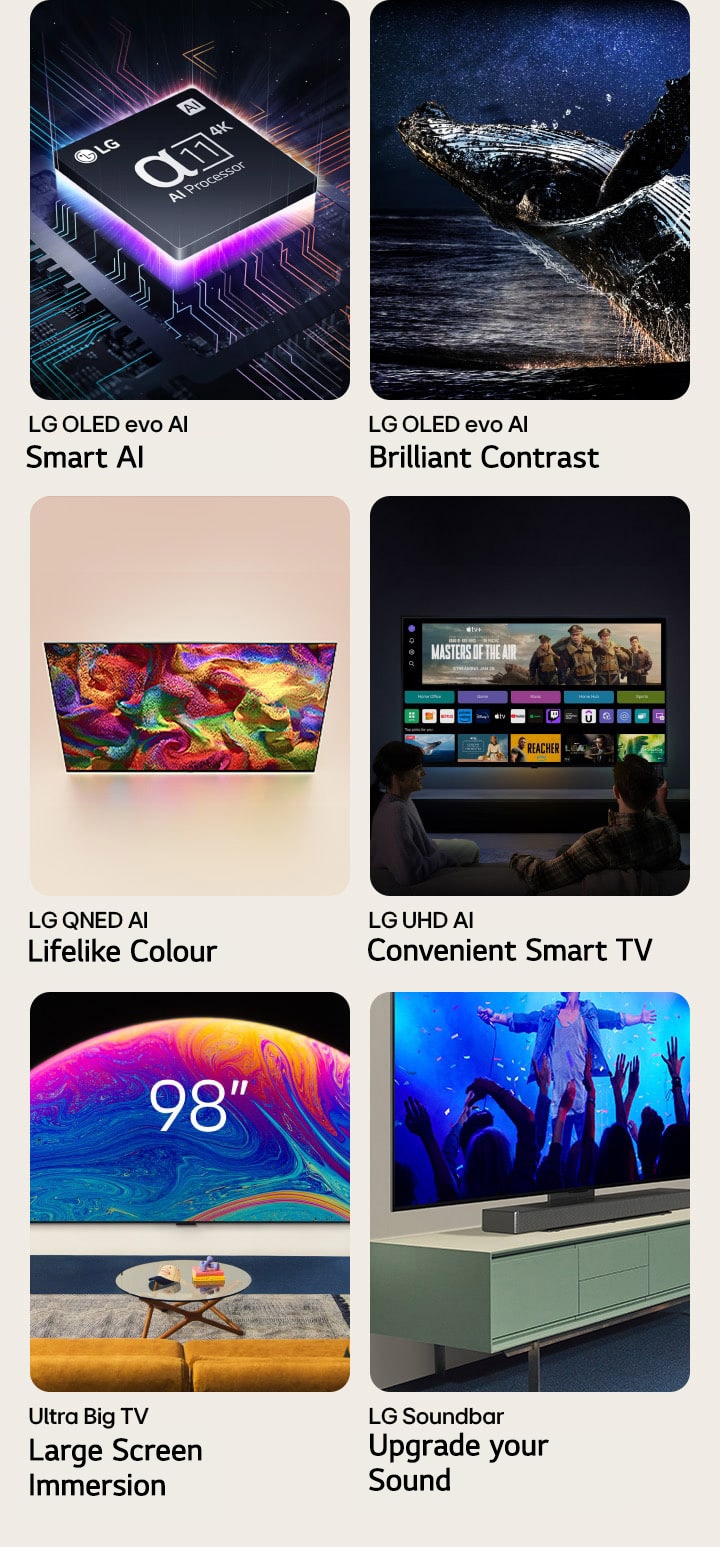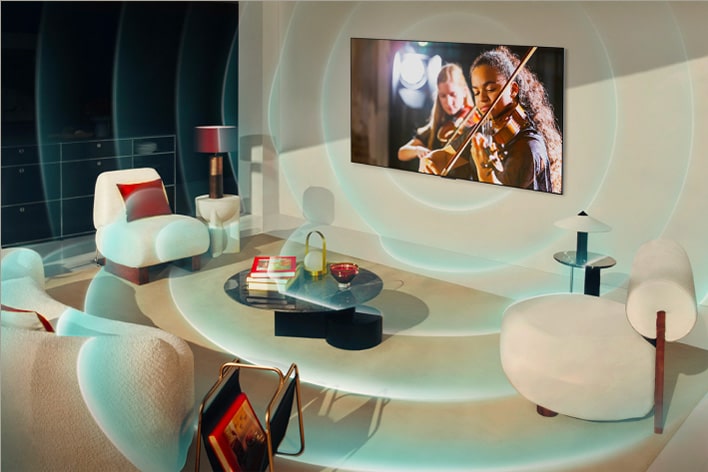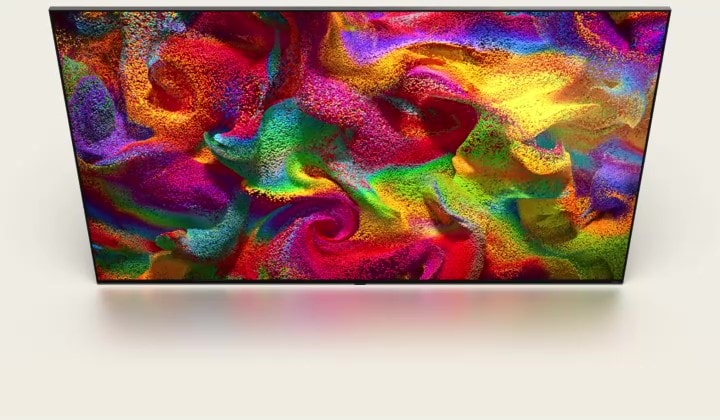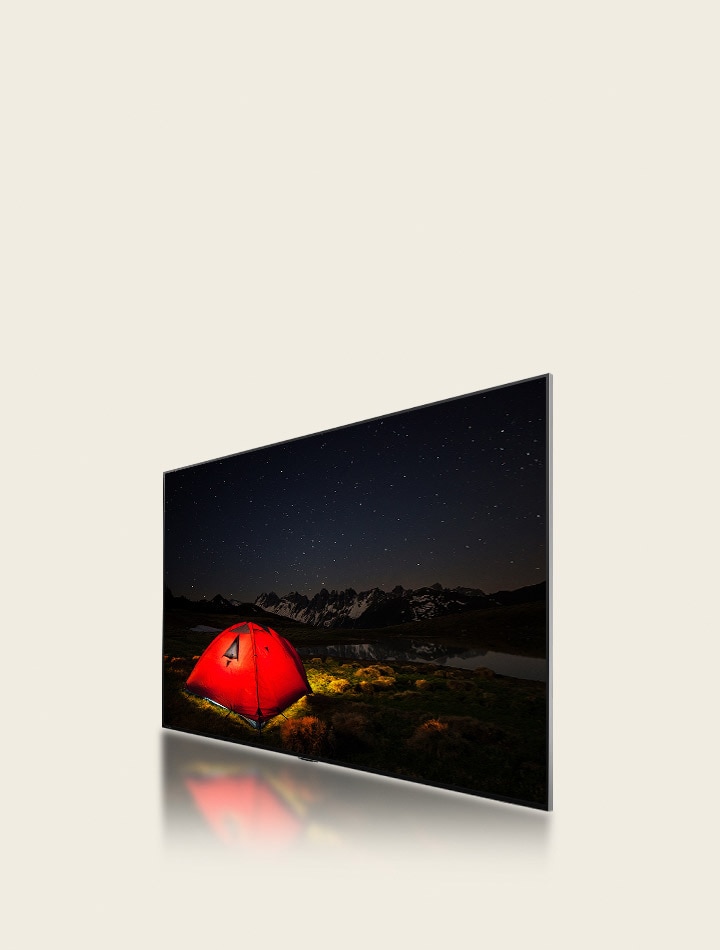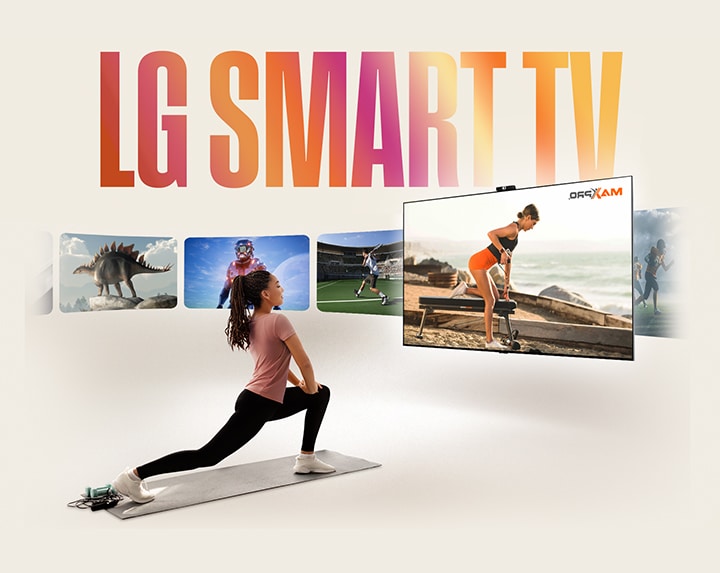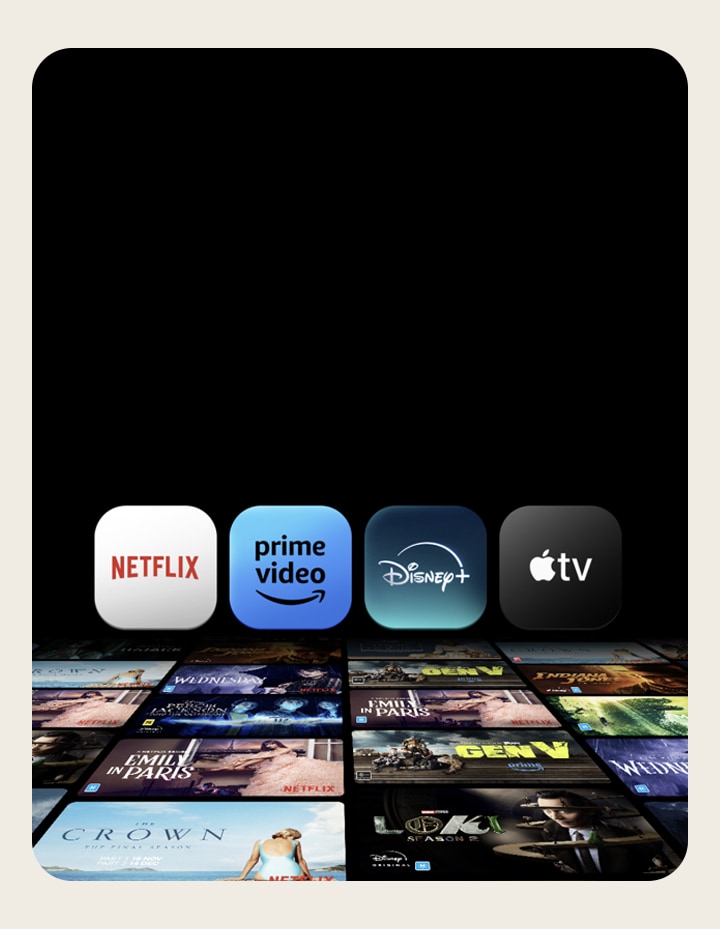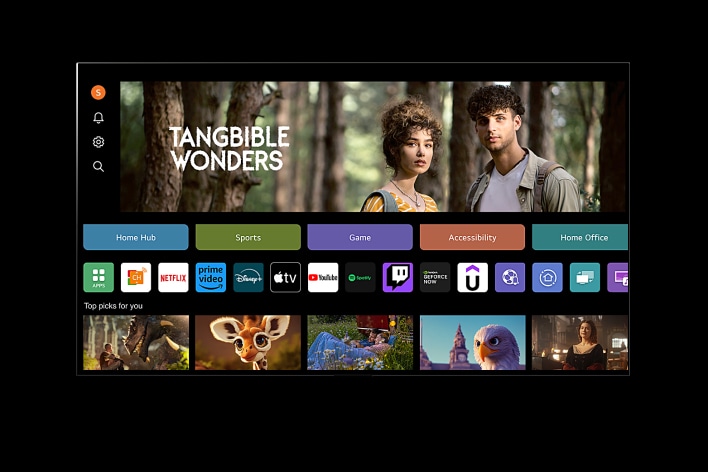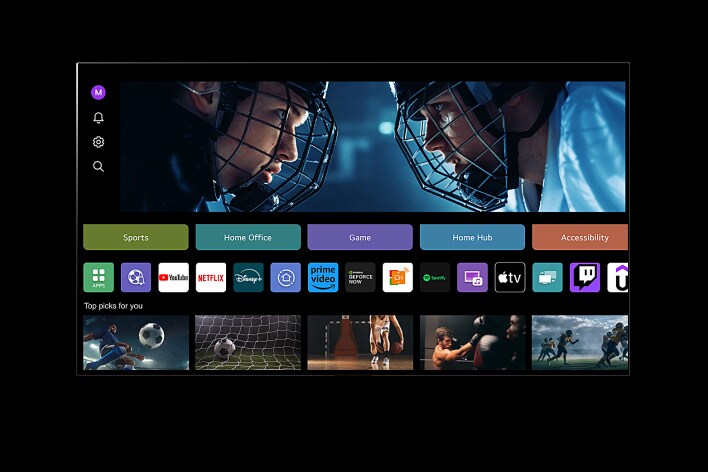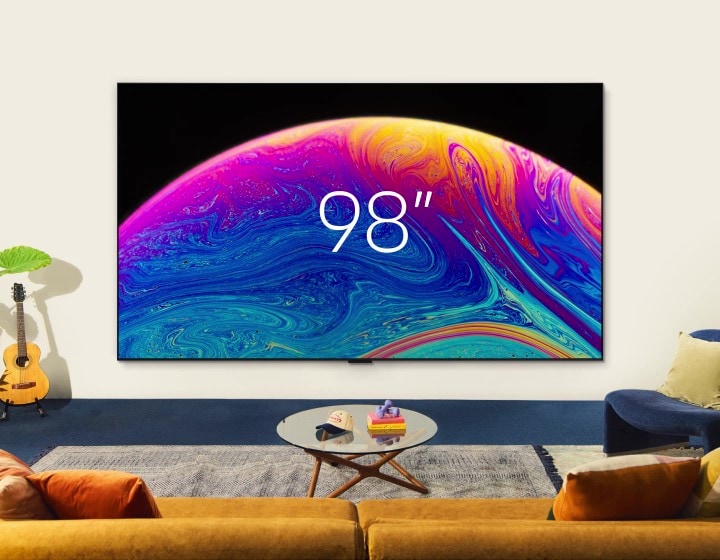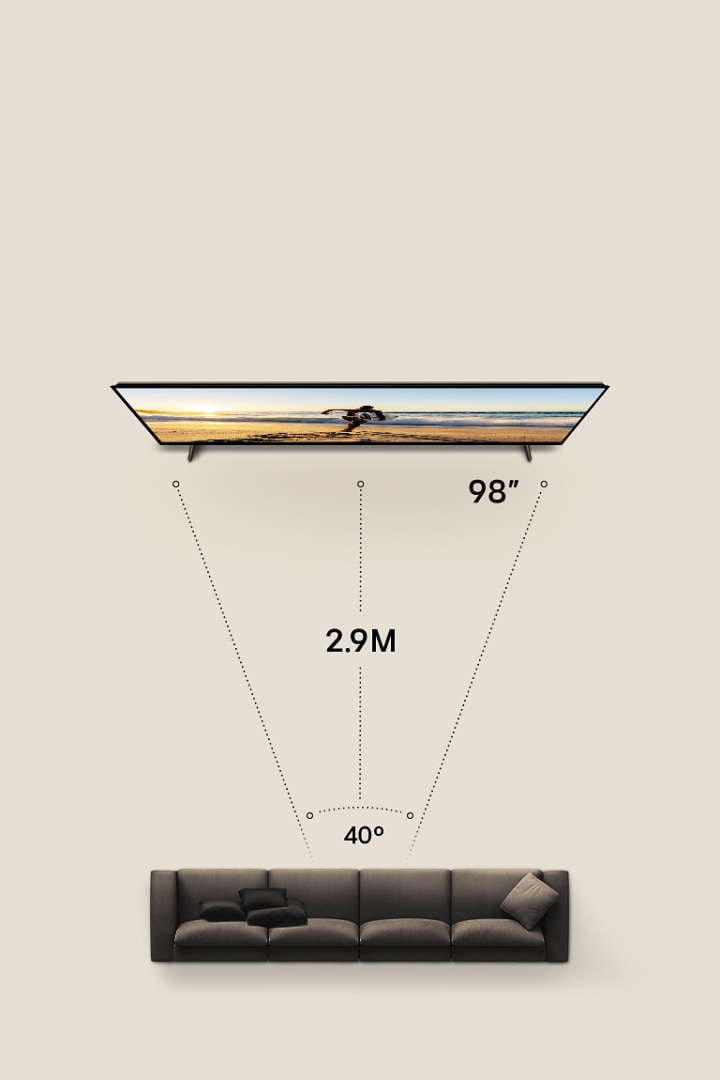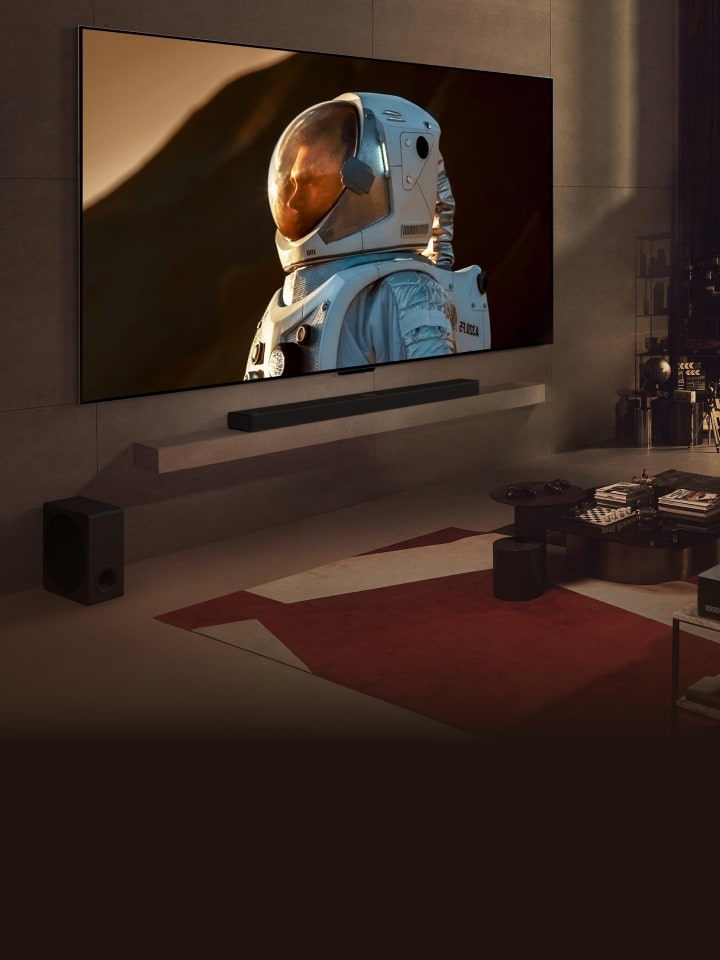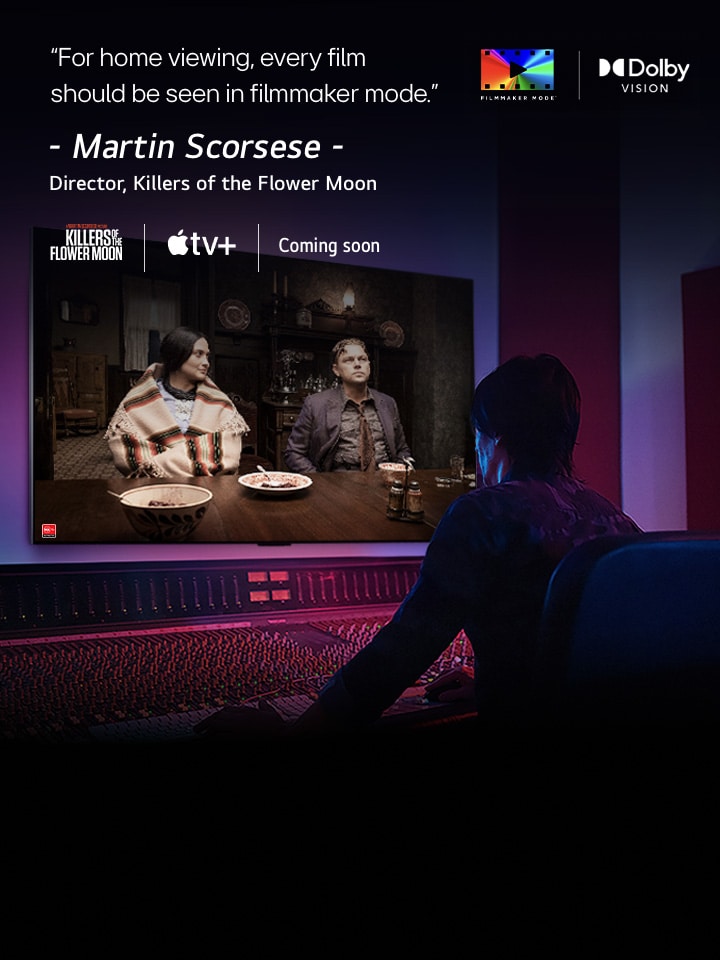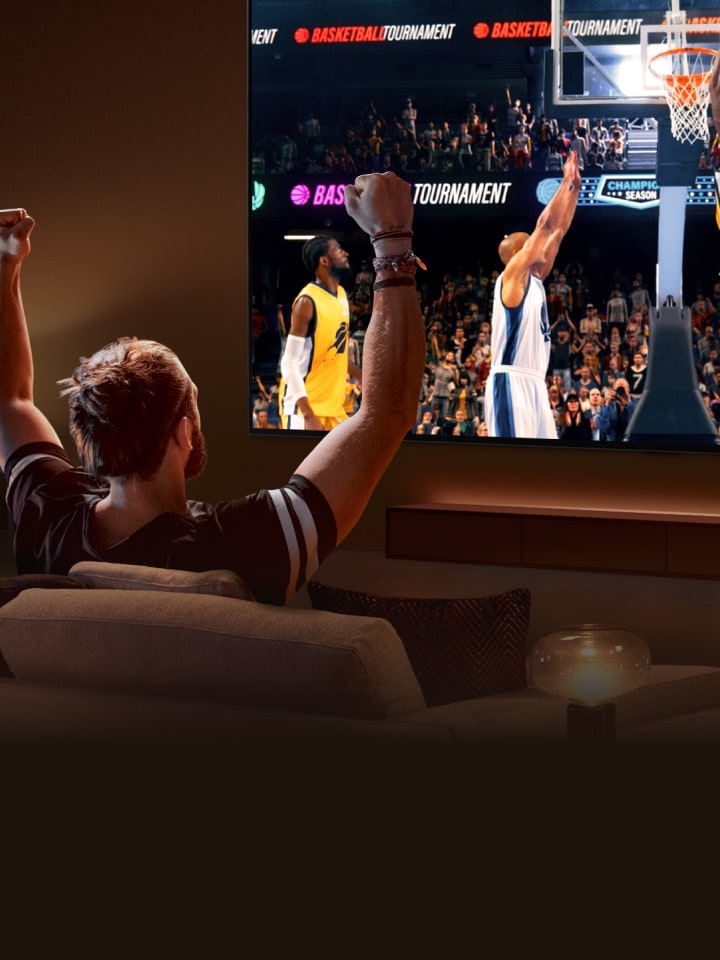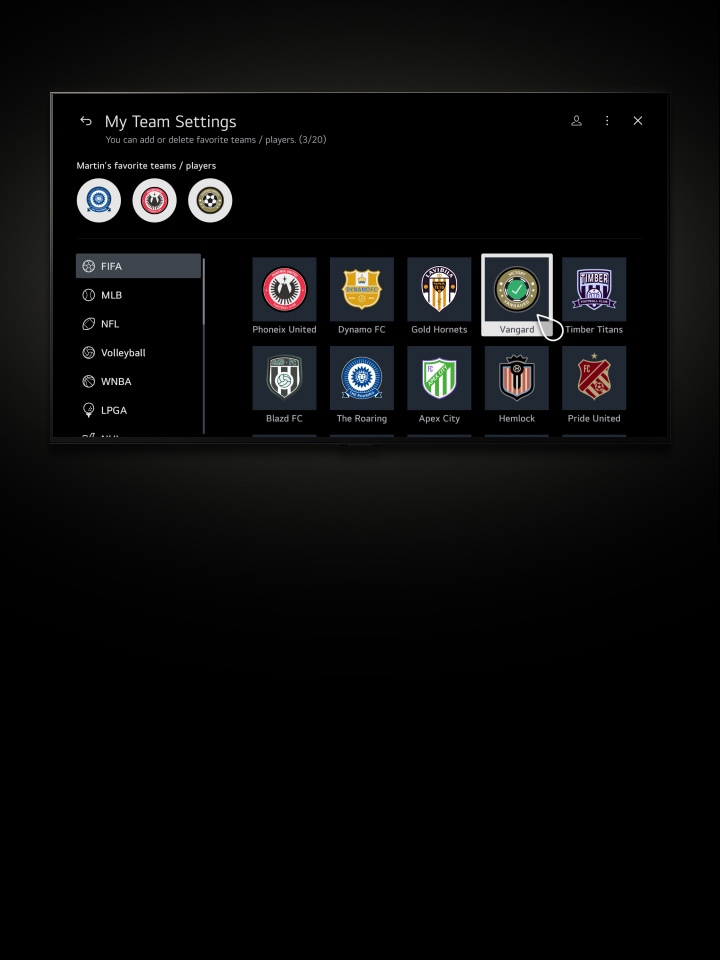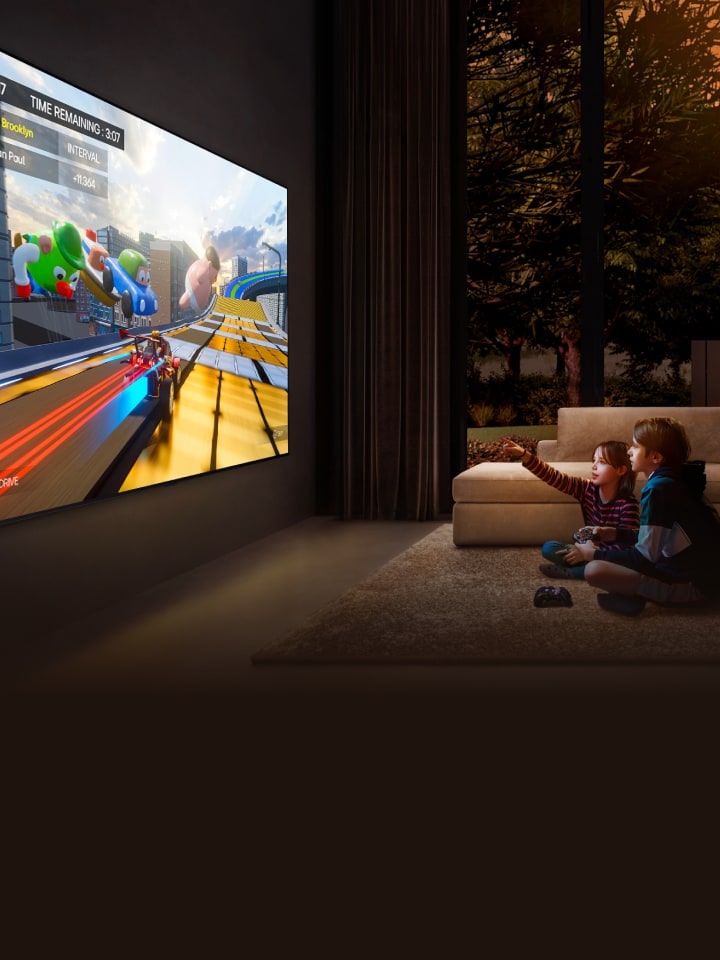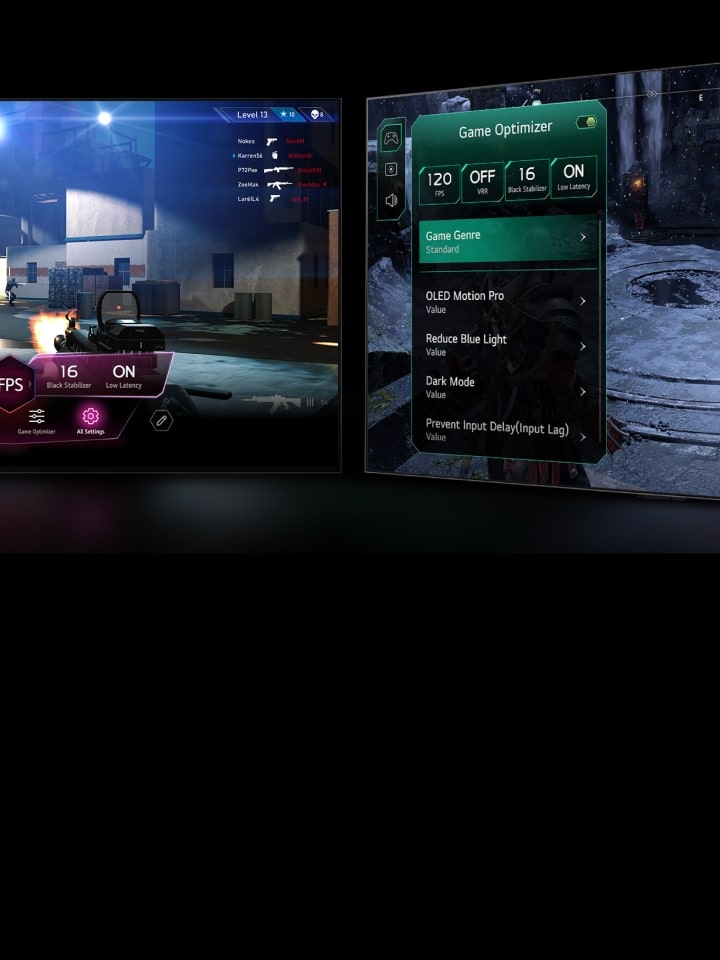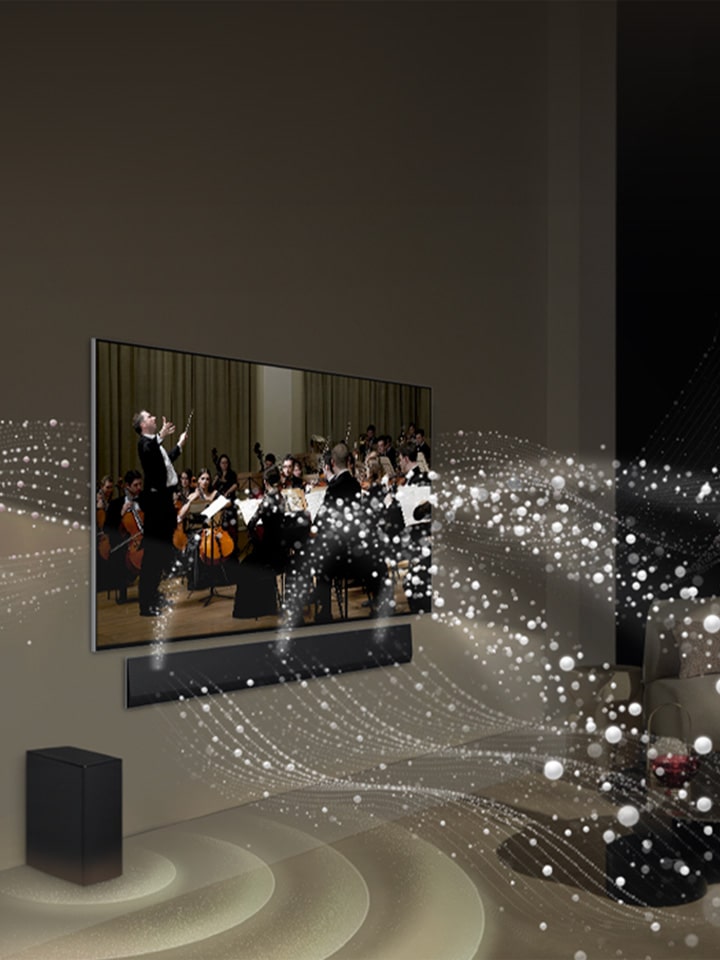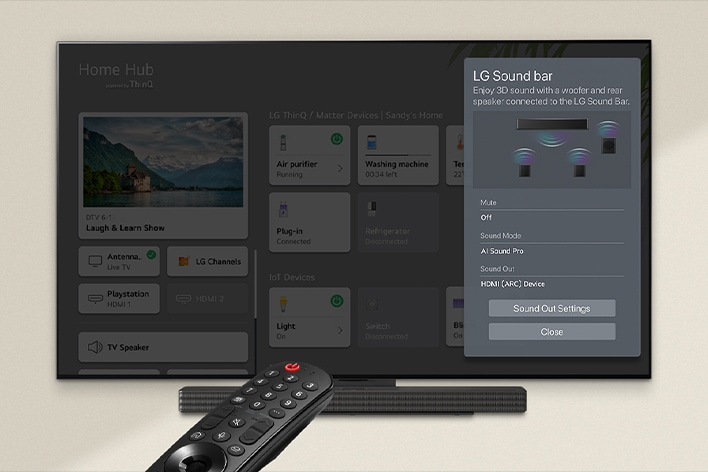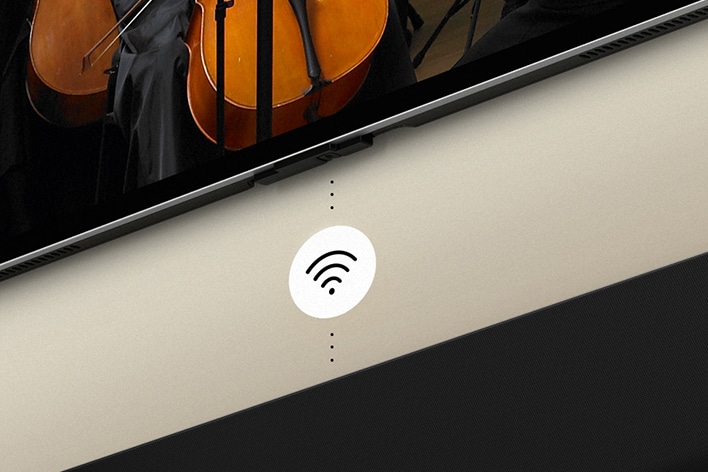We use cookies, including cookies from third parties, to enhance your user experience and the effectiveness of our marketing activities. These cookies are performance, analytics and advertising cookies, please see our Privacy and Cookie policy for further information. If you agree to all of our cookies select “Accept all” or select “Cookie Settings” to see which cookies we use and choose which ones you would like to accept.
Buying Guides
How do I choose the best TV for me?
OLED, QNED or UHD—which TV is best for you? Here's your guide to finding your perfect LG TV and the soundbar to match, whether it's a smart AI TV, an immersive big TV, or an extra colourful picture.
What’s most important to you when buying a TV?
Why do we need AI for a TV?
AI is the brain of the LG OLED TV, improving picture, sound quality and usability. Our Smart AI powered by the alpha 11 AI processor learns your preference for mind-blowing immersion.
Picture personalised to you
The simple way to set your ideal picture. Pick your favourite images, and AI Picture Wizard analyses them to create the ideal sharpness, contrast, and colour settings just for you.
*Image simulated for illustrative purposes. AI Acoustic Tuning must be activated through the AI Service menu.
Want bright, crisp TV viewing?
Open your eyes to incredible pictures with up to 150% higher peak brightness, powered by Brightness Booster Max.*
See incredible depth and clarity, where the shadows can be as powerful as the highlights. Infinite Contrast utilises OLED's perfect black to make brights appear brighter, colours more vibrant, and images more lifelike.
*Applies to 55/65/77/83" G4. Compared to non LG OLED evo models and based on Full White Screen measurement.
Meet OLED TVs with our smartest AI
Meet OLED TVs with our smartest AI
Want a TV with lifelike colour?
Experience images powered by QNED Colour technology, for vivid colour with suberb realism.
*Feature available on QNED91/89.
Explore a bigger, more vibrant QNED TVs
Explore large screen QNED TVs
How about a Smart TV?
Your place on TV
With My Profile, get personalised picture settings, movie suggestions, and quick access to favourite apps and shows, all from the one place dedicated to you.*
Just for me
Categorise your favourite apps and services with dedicated Quick Cards. Arrange them how you like, switch them up, and jump quickly into your content.
*Internet connection, subscription and data charges may apply. Separate terms and privacy policy apply to Smart TV apps. Failure to accept the terms applying to an app may result in inability to use the app. Content, features and third party services will vary from time to time without notice.
Explore our Smart UHD TVs with smarter price
Explore our Smart UHD TVs
Is bigger better?
The bigger the screen, the more immersive your content becomes. Go big to elevate your view with AI Super Upscaling and feel incredible immersion in movies, sports, and games.*
*AI Super Upscaling is not available on QNED81 and UHD models.
*Dolby Vision High Dynamic Range content required. Dolby Atmos source content required for full audio effect. Dolby, Dolby Vision, Dolby Atmos and the double-D symbol are trademarks of Dolby Laboratories.
*Compatible with all LG TV models from 2020 onwards (webOS 5.0). Internet connection required. Subscriptions and data costs apply. Content, features and third party services will vary from time to time without notice. Compatible controller required.
**FreeSync and VRR support apply to selected TV models only. Refer to model specifications for details.
Meet our wide range of Ultra Big TVs
Explore our wide range of Ultra Big TVs.
What's the best soundbar to pair with my LG TV?
LG Sound Bars complete the LG TV experience. Enhance your sound with soundbars for your TV with cinema-like sound, so powerful it puts you right in the heart of the action.
LG Sound Bars perfectly complement your LG TV experience.
Find the best LG Soundbar and LG TV pair
*For the full list of compatible TV and sound bar models, visit lg.com/au/wow-orchestra-interface
